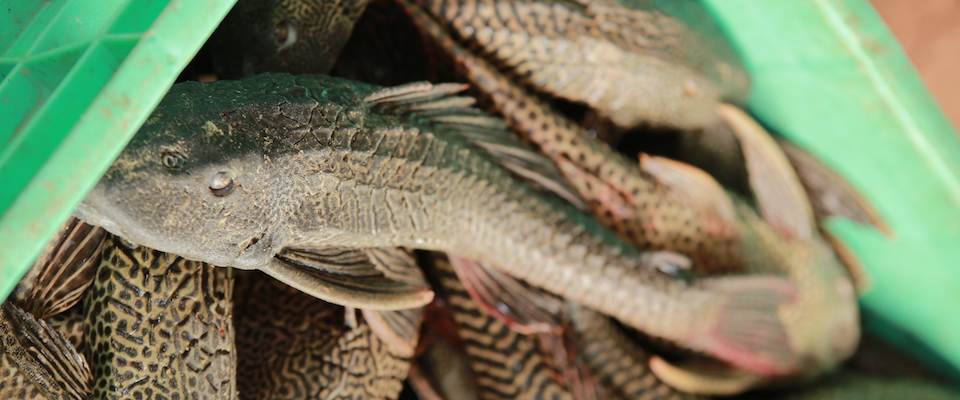Can nature thrive in a war zone?
It is a counterintuitive—and in many ways, deeply disturbing—development, but something good has come out of the reign of terror by Somali pirates: fish. Tuna, wahoo, and marlin, to be precise—the big pelagic fish that are in high demand in the world’s upscale markets and restaurants.
These species have been in steep decline, a consequence of overfishing by the huge trawl, long-line, and drift-net boats of the international fleet. But Somali pirates have kept the fishing boats away in recent years—and they have also scared off rogue tankers and freighters dumping toxic waste, long an environmental concern for the countries of East Africa. The fish have boomed back as a result, notable exceptions on a planet with marine fisheries that are largely bankrupt.
And the pirates, it turns out, are quick to spot a public relations opportunity. As noted by Clive Schofield, associate professor and director of research at the Australian Centre for Ocean Resources and Security at the University of Wollongong, the pirates are now claiming that they are an ad hoc “coast guard” for Somali’s offshore resources, and the ransoms demanded for captured ships and crews are appropriate recompense for decades of rapacious fishing and waste-dumping by developed nations.
In a report Schofield authored in 2009 for the S. Rajaratam School of International Studies in Singapore, he estimated the annual value of the illegal catch in Somalia’s waters during the pre-piracy years at between $90 to $300 million. “Without condoning violence at sea, it is clear that the Somalis who hijack shipping off their coast are in fact not the only ‘pirates’ operating in these waters,” Schofield wrote.
Somali’s pirates have thus been able to do something that international maritime accords, rigorous fishing quotas, and a slew of environmental organizations have not: resuscitate major marine fisheries. As Schofield notes, the methods can hardly be countenanced, but there is no arguing with the results.
Nor is Somalia a freakish outlier. There are other cases of conflicts paying unexpected environmental dividends. In the Philippines, territories controlled by the leftist New People’s Army typically support relatively healthy rainforest; loggers, illegal or otherwise, fear to tread (and cut) in areas where testy and heavily armed Communist insurgents regularly patrol. And for years in Colombia, the Revolutionary Armed Forces of Colombia (FARC), another leftist armed insurgency, controlled vast stretches of intact forest. As in the Philippines, logging and other forms of development were minimal in those areas under insurgent control.
All across the developing world, conflict has discouraged some of the forms of development that typically degrade the environment—mines, resorts, aquaculture facilities, and ambitious agricultural schemes, including biofuel plantations. All these projects demand abundant capital to turn a profit. But before cash is invested, something else must be made available: peace. Astute businesspeople do not put their money where war or piracy prevail.
This raises some troubling questions. Is “peace” in the developing world inevitably tantamount to rapid and destructive resource exploitation and subsequent environmental destruction? If so, can conflict be considered a positive force for conservation? The best answers to such questions are less than straightforward. Yes, conflict usually retards development, and natural resources thus go unexploited, preserving specific and desirable ecological values. But conflict is by definition disruptive. It engenders the decay of both social concord and vital infrastructure, and ultimately creates conditions of misery and terror. It kills people outright, and it brings profound environmental downsides of its own. Widespread poaching of wildlife by insurgent troops, for example, is common in the conflict zones of Asia, Africa, and South America.
And most researchers say it is naive to ascribe preservationist impulses to insurgents, the claims of Somali pirates notwithstanding.
Dan Fahey, a Ph.D. candidate at Berkeley’s Department of Environmental Science, Policy, and Management, is currently involved in field research on conflict and natural resource issues in the Congo. “It would be very hard to label any of the rebel groups in the Democratic Republic of the Congo as guardians of ecological services,” he said via email. He described the 2007 killing of mountain gorillas in Virunga National Park by a group known as the “charcoal mafia.” Park rangers, he wrote, were trying to prevent the group from cutting down trees and making charcoal in the park. The mafia members, he said, “killed the gorillas and left them as a sign.”
Rather than steadfastly protecting natural resources, then, rebels are usually unable or otherwise disinclined to exploit them—the protection is de facto, not deliberate. “When an area is in conflict, insurgents typically do not have the incentive or the means to sell timber or minerals,” says Nancy Peluso, a Berkeley associate professor at the Department of Environmental Science, Policy, and Management. “That often changes when a settlement is reached. Then it may become in the interest [of all parties] to exploit natural resources in the former conflict zones.”
Such post-settlement political stability can also create a false impression of resolute resource protection, notes Peluso—a kind of Potemkin village presented to the developed world that does not jibe with reality. Much of Peluso’s recent work focuses on “political forests.” “They’re officially forests—forests on paper—but when you actually see them, there may be little or no forest cover,” she says. “The administrative designation doesn’t necessarily reflect what is on the ground.”
The specific dynamics of a conflict will largely determine whether or not it has a destructive impact on the environment, observes Liliana Davalos, an assistant professor of conservation biology at Stony Brook University. Davalos has conducted extensive research in Colombia’s forests, regions that have sustained large-scale cocaine production as well as the aforementioned leftist insurgency.
The decades-long war with FARC, notes Davalos, generally left the forest intact. “The essential forest structure remained, though there were other significant impacts—the general misery and deprivation caused by war, of course, and also wildlife poaching by combatants.”
Cocaine production, on the other hand, was extremely destructive to forest cover. Davalos served on a panel of scientists convened in 2008 at the Natural History Museum of London to elucidate the consequences of the South American drug trade on biodiversity. During that discussion, she noted that approximately 250,000 acres of forest are razed yearly for coca plantations, and that highly toxic herbicides are used around the coca shrubs. At least 5,500,000 gallons of acetone, 3,420,000 gallons of gasoline, and 21,000 gallons of sulfuric acid are employed annually to process the coca leaves, after which the residual slurry is simply dumped untreated into waterways. Airstrips are carved illegally out of national parks and other reserves to transport both the raw cocaine paste and the finished drug.
It is also true that efforts to combat the trade have had profound environmental consequences, observed Davalos—most notably the aerial application of herbicides, which destroys adjoining woodlands, contaminates waterways, and wipes out aquatic organisms.
And, Davalos says, the environmental price for peace may be just as high—or even higher—than war or the supression of the cocaine trade. Colombia is now getting a handle on drug production, and settlements have been negotiated with FARC. Simultaneously, ambitious resource development schemes are now underway in the former conflict territories. As the countryside has stabilized, Davalos notes, the Colombian government has conferred major tax breaks and subsidies for industrial-scale agriculture (particularly biofuels plantations) and has greatly expanded access and incentives for mining, logging, and timber plantation projects. “We’re only beginning to crunch the numbers now,” Davalos emailed in a follow-up to an interview, “but some of these projects may account for the high deforestation rates observed in the central part of Colombia during [a] 2011 study.”
It is difficult and troublesome to parse the relative value of such trade-offs, of course. Why should people have to choose between social and environmental stability? In an efficient and honest society, such a decision would not be necessary.
All of which brings up a larger issue, observes Tom McShane, a senior scientist at the Global Institute of Sustainability at Arizona State University and coauthor of The Myth of Wild Africa, a seminal book on African conservation issues. Namely, while some insurgencies seem to preserve or enhance biodiversity, others decidedly don’t—the situation in the Congo constituting a prime example: “The Lord’s Resistance Army [and] other groups have looted their way across the eastern Congo with the result that there is widespread elephant poaching, and the northern white rhino may now be extinct in the wild,” McShane wrote in an email exchange.
Likewise, he writes, Nepal’s Maoist insurgency has made many of the country’s reserves unsafe to visit. “As a result, there was widespread poaching and destruction of the protected area infrastructure—all this has to be rebuilt at great cost.”
Thus, it’s not strictly a matter of peace or conflict, McShane says. “I think of these issues more in terms of governance,” McShane writes, which, he adds, “is not the same as government. Governance includes the actions of the state and, in addition, communities, the private sector, and NGOs.” Governance, in other words, involves the dissemination of power among different players, effectively reducing the number of disenfranchised groups willing to take up arms.
“I find it interesting that conservation groups work well in countries that are either one-party states or dictatorships—something not all that different from the way that many rebel groups and insurgencies operate,” writes McShane. “The reason for this is simple—such forms of government are direct in their decision-making process. If they support conservation, then things happen quickly. [But] as we have seen lately in Tunisia and Egypt, things can change rapidly in countries assumed to be stable but authoritarian.”
So instead of trying to work with authoritarian governments, or insurgencies, to institute sweeping preservation initiatives, McShane says, “In the long term, it may be more effective to build the foundation of governance—civil society—to support conservation.”





















